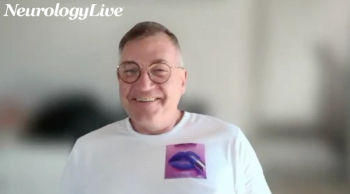Dysautonomia, classified by dysfunction in the autonomic nervous system, encompasses a diverse array of symptoms and disorders. Among the most prevalent dysautonomic conditions are postural orthostatic tachycardia syndrome (POTS), neurocardiogenic syncope (NCS), and orthostatic hypotension (OH), which are frequently linked to hypermobility spectrum disorders (HSD) and mast cell activation syndrome (MCAS).1 The intricate nature of these complex disorders is further compounded by the frequent occurrence of migraines, especially in patients showing a constellation of systemic symptoms such as persistent dizziness, lightheadedness, orthostatic intolerance, joint pain, and allergic manifestations.
A recently published review of literature conducted by author Svetlana Blitshteyn, MD, FAAN, director and founder of Dysautonomia Clinic, in Buffalo, New York, revealed that many studies had a constant overlap and shared pathophysiology in migraine, dysautonomia, HSD, and MCAS.1 In this paper, Blitshteyn noted that these complex disorders may have challenges in diagnostic and treatment in patients with migraine in the clinical setting. Throughout her review, she noted the importance of diagnosis and comprehensive treatment of these disorders in patients with migraine to reduce symptom burden and improve functional outcomes for both migraine and comorbidities.
In a new iteration of NeuroVoices, Blitshteyn, who also serves as a clinical associate professor of neurology at the University at Buffalo Jacobs School of Medicine and Biomedical Sciences, discussed the prevalence of migraine in patients with dysautonomia, HSD, and MCAS, and the challenges that arise in diagnosing and treating this triad. She also spoke about the role of recognizing overlapping disorders and comorbidities in avoiding misdiagnoses and improving treatment outcomes in headache medicine. In addition, she talked about how collaborative efforts between neurology and headache medicine can potentially enhance diagnostic and therapeutic strategies for patients with complex symptoms.
Top Clinical Takeaways
- Migraine commonly coexist with dysautonomia, HSD, and MCAS, forming a challenging triad that often goes undiscussed in scientific literature.
- Neglecting to address comorbidities beyond head pain can lead to misdiagnoses of psychiatric disorders, emphasizing the need for a holistic approach in headache medicine.
- Effective treatments for dysautonomia, HSD, and MCAS exist, highlighting the importance of recognizing and treating the triad to improve patient outcomes and avoid the "intractable" label.
NeurologyLive: Could you provide a brief overview of the research you conducted in this paper?
Svetlana Blitshteyn, MD, FAAN: I am a clinician who sees many patients with a triad of dysautonomia, HSD, and MCAS. We know that these patients commonly experience migraines. In clinical practice, we refer to this as a triad of dysautonomia, HSD, and muscle activation syndrome. In medicine, what you observe in clinical practice must be described in scientific literature to solidify these findings. I conducted a review on this topic to explore what is available in the scientific world, and my review paper was published. We found a significant shortage of scientific studies on this trial. While we observe it in clinical practice, there is not much written about it. I decided to share my clinical experience and the existing literature on this topic.
What have you observed in your clinical practice that is also included in this paper?
As a neurologist specializing in autonomic disorders, I frequently encounter common autonomic disorders in my clinic. Many patients have POTS or NCS, which are the 2 most common autonomic disorders in large clinical practices. A significant number of these patients also experience comorbid headaches, with migraine being the most common. Larger studies indicate that migraine is the most common comorbidity of POTS, affecting at least 40% of patients. In the HSD world, headache and migraine are common comorbidities, along with other neurologic manifestations such as dysautonomia, sleep disturbance, neuropathy, and more. MCAS is a multi-system inflammatory disorder with allergic symptoms, and migraine is very common, especially in response to environmental stimuli.
Taken together, I observe numerous comorbidities in my patients, and my colleagues in headache medicine are also encountering the same patients. It is crucial for us to learn about these overlapping disorders, understand the presenting symptoms and signs, and be familiar with the diagnostic criteria for each disorder to avoid missing them. Subsequently, it is important to understand the necessary investigations, imaging, and bloodwork for these patients. Finally, proper treatment is essential. In headache medicine, there is a tendency to focus solely on head pain, neglecting other significant comorbidities such as dizziness, allergies, chronic pain, sleep disturbance, or gastrointestinal abnormalities.
It is common to concentrate on our trained specialty in classical neurology, but patients are often experiencing various other symptoms. Instead of suggesting, "Why don't you see an allergist? Or why don't you see a cardiologist? Or why don't you see a gastrointestinal specialist?" We should be able to synthesize everything by putting a label on it. If we cannot treat these other subspecialties, we should at least streamline and understand these common comorbidities. Neglecting to do so results in a patient population labeled as intractable or complex, often misdiagnosed with psychiatric disorders. In my experience, assuming psychiatric issues when migraine treatments are ineffective is a common mistake. Patients may have a systemic comorbidity that goes undiagnosed and untreated for years or decades.
How do you identify and address these comorbidities going forward?
As neurologists, we are trained to recognize patterns, but this is not extensively covered in medical school or neurology training. While we learn about headache patterns, understanding the context is crucial. If a patient reports migraines along with daily dizziness, inability to function, body and joint pain, and gastrointestinal symptoms, it is tempting to concentrate solely on the headache. However, it is essential to consider the broader context and identify what else might be present, especially if migraines are untreated or partially treated.
I frequently hear from my headache colleagues about a subset of patients challenging to manage. These patients exhibit a wide range of symptoms, and even though their migraines, depression, and insomnia are treated, they do not improve. In my experience, the reason for their lack of improvement is often the presence of a comorbid autonomic disorder, HSD, or muscle activation syndrome.
This difficult patient population requires closer attention, and we should avoid dismissiveness or creating psychosomatic labels. Many patients in this group have been misdiagnosed with psychiatric disorders, leading to ineffective treatment pathways. My paper emphasizes to neurologists that when treating difficult patients with migraines, if they are not improving despite various medications, it is crucial to consider the triad of dysautonomia, HSD, and MCAS. Recognizing these syndromes is vital because each has an effective treatment regimen.
For dysautonomia, medications can address headaches, low blood pressure, fainting, and dizziness. For HSD, while there are no genetic treatments, recognizing it is crucial as there is specialized physical therapy available. For MCAS, medications such as over-the-counter antihistamines and a specialized diet, including low histamine and often gluten-free, can be effective. Implementing these treatments can lead to miraculous improvements, and collaboration between neurology and headache medicine can enhance diagnostic and therapeutic strategies.
Why did you decide to write this paper?
My colleagues in headache medicine, neurologists specializing in headaches, invited me to speak on these topics because of the recognition of an unmet need and unrecognized comorbidity in their complex headache patient population. As I developed my presentations and lectures, reviewing the literature revealed a scarcity of studies and papers on these topics within headache and neurology literature. Invitations to contribute to their literature prompted me to share my material, which was accepted. This is a positive development as there is a lack of papers and guidelines on these topics. The next step for those specializing in these disorders is to develop diagnostic and treatment guidelines for this patient population. A small group of neurologists is already working on these issues and seeing patients with dysautonomia, HSD, MCAS, and migraines.
Transcript edited by artificial intelligence. Click here to view more NeuroVoices.
REFERENCES
1. Blitshteyn S. Dysautonomia, Hypermobility Spectrum Disorders and Mast Cell Activation Syndrome as Migraine Comorbidities. Curr Neurol Neurosci Rep. 2023;23(11):769-776. doi:10.1007/s11910-023-01307-w










































